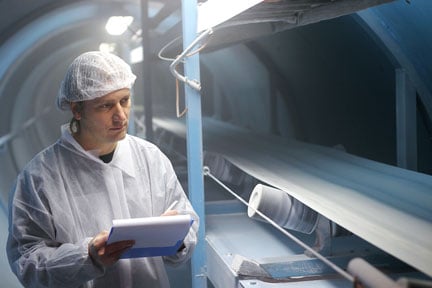Sugar is a common product found in kitchens worldwide. From its familiar appearance to its unmistakable taste, commercial sugar of today is easily recognizable. But even a staple as basic as sugar requires a great deal of processing in order to create a consistent final product. One fundamental step in sugar processing is the use of a sugar dryer. Drying is traditionally achieved using high-grade equipment, typically a rotary dryer, in order to produce a consistent, quality product free of lumps and discoloration.
Before discussing the sugar drying process, it is important to note that sugar is a general term applied to a large class of carbohydrates found in most plants. Various types of sugar can be derived from many different sources, but the sugar typically used as a commercial food is sucrose. Sugar processing extracts sucrose from raw materials, such as sugarcane and sugar beets, in order to produce the desired final product.
A great deal of processing occurs at a sugar refinery before sugar can dried. In the case of sugarcane, typical steps include material preparation, clarification, extraction, evaporation, crystallization, and centrifugation. Once the drying process is complete, it is typically cooled in a rotary cooler or fluid bed cooler prior to packaging or storage.
Employing the Right Sugar Dryer
Most sugar refineries utilize an industrial drying system to draw moisture out and create a high-quality sugar (without a drying process, clumping and material discoloration could occur).
Rotary dryers used in sugar production traditionally employ a counter-current air flow configuration to dry the sugar while it tumbles through the long, cylindrical drum of the dryer. Co-current configurations, while less common, are also used to dry sugar. A long retention time in the drum is required to effectively remove moisture from the sugar.
There are many advantages to using a rotary dryer when drying sugar. A rotary dryer is:
- suitable for a variety of sugars
- less prone to sticking or caking
- robust and reliable
- able to handle a wide variability in feed conditions
- available in stainless steel (a requirement for many food production facilities)
Conclusion
Drying is an integral part of the industrial process that takes sugar from raw material to finished product. Finding the right sugar dryer is crucial to creating and maintaining a pristine final product worthy of being used in kitchens around the world.
FEECO has over 70 years of experience constructing the industry’s most reputable rotary dryers. In addition to equipment design and manufacturing, we can also simulate production conditions in our state-of-the-art testing facility, The FEECO Innovation Center, as well as provide extensive parts & service support. For more information on sugar dryers, contact us today.


